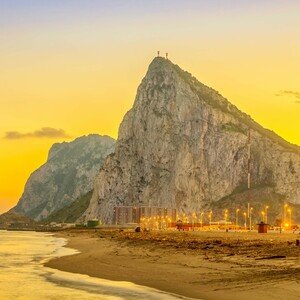Ski slopes in Europe forced to close early – here’s where travelers are impacted
It hasn’t been the white Christmas many of Europe’s ski resorts were hoping for.
Despite a snowy start to the season, a winter heat wave across the continent coupled with heavy rain has seen ski runs and lifts closed just weeks after they opened. And rather than fresh powder and free-flowing pistes, skiers are being greeted with brown and green slopes, particularly at low-altitude resorts in France and Switzerland.
Explore the planet’s most surprising adventures with our weekly newsletter delivered to your inbox.
It’s a blow to the resorts, ski-lift operators and other service providers that had hoped this season would kick-start the recovery from the COVID-19 pandemic – and a reminder of how the climate crisis is impacting Europe’s ski industry.
But there is good news to share: the closures are – hopefully – only temporary. Snow is forecast in the French and Swiss Alps as early as this weekend, with temperatures also set to drop in Italy and Austria. As they do, artificial snow cannons (which only work when the temperature is 0°C or less) will also be fired back up.
Here’s what you need to know about current skiing conditions all over Europe.
While French ski resorts in the Jura, Pyrenees and northern Alps are affected by recent warm weather, resorts such as and Val d’Isère in the southern Alps are reporting business as usual © Difught / Shutterstock
France
According to Domaines Skiables de France, on Thursday, January 5, 45 percent of ski slopes in France were open.
The most affected areas are the northern Alps, the Jura Mountains and the Pyrenees to the south. On New Year’s Eve, Ax 3 Domaines, a resort near Andorra, closed completely. According to French radio station France Bleu, not a single snowflake had fallen since December 18, and artificial snowmaking had only enabled 30 percent of runs to open.
In the French Alps, high-altitude resorts such as Tignes, Val Thorens, Les Arcs, La Plagne and Val d’Isère are reporting business as usual.
At lower altitudes, Les Gets and Morzine have been particularly affected. Speaking to Lonely Planet, Chrys Felisaz from Les Gets Tourism confirmed there was currently only one run open. “The season started well. However, at the beginning of the school holidays we had three days of heavy rain which washed away the snow and it hasn’t snowed since,” Felisaz said.
In neighboring Morzine, the situation isn’t much better. “The links on the Morzine–Les Gets area had to shut on January 1 and just the beginner area now remains open,” said Sara Burdon of the Morzine Tourist Office.
Skiers at both resorts, however, are able to ski nearby Avoriaz, where 65 percent of the ski area is currently open. And with snow forecast for the coming week, both are expecting the imminent reopening of their pistes.
There is plenty of snow, however, in the southern Alps. Serre Chevalier, the largest ski area in the region, is reporting snow depths of up to 1.7m (5.5ft).
Winter weather in Switzerland is breaking high-temperature records – though most lifts remain open in Zermatt and other major resorts © Pathara Buranadilok / Shutterstock
Switzerland
Already, 2023 has seen temperature records tumble in Switzerland: on New Year’s Day in the town of Delémont in the Jura Mountains, the thermometer topped 20.2°C (68°F) – the hottest January day on record north of the Alps.
While no major resorts in Switzerland are closed (at the time of writing, only one, Spluegen-Tambo in the south of the country, had temporarily ceased operations), in Gstaad only 16 of 70 slopes were open on Thursday, along with 14 of 31 lifts. The situation is better in Zermatt (45 of 56 lifts open) and Verbier (14 of 18 lifts open).
Crans-Montana Tourism’s Pierre-Henri Mainetti says that despite warm weather and rain just after Christmas, the upper runs at the resort are in “good condition.” “Some slopes lower down have closed, but there’s still plenty of skiing available,” he said. Jungfrau reports similar conditions.
Austria
While describing the situation as “challenging,” Holger Gassler from the Tirol Tourist Board told Lonely Planet that all the major ski villages in the Austrian Tyrol region are open, including popular resorts such as St Anton am Arlberg and Ischgl. “The majority of the slopes are open, with good conditions at higher altitudes. However, even skiing at lower altitudes is possible due to good snow-making facilities,” he said.
Italy’s ski resorts, such as Courmayeur, have reported fewer closures than elsewhere in Europe © Roberto Caucino / Shutterstock
Italy
Italy’s ski season is faring better than those in France and Switzerland. In Courmayeur, at the foot of Mont Blanc in Valle d’Aosta, “the snow conditions are great for those of all abilities,” said Raffaella Scalisi, General Manager of the Courmayeur Mont Blanc Tourism Board. “The downtown area is full of people and is buzzy with excitement for the first full ski season since COVID-19,” she added.
Almost all slopes are open in the Dolomiti Superski area, spokesperson Diego Clara told Lonely Planet – although two weeks of unusually high temperatures have meant less than ideal conditions. “In some places, the snow has gone soft and wet by midday,” he said.
Like other resorts, Dolomiti Superski is looking forward to lower temperatures in the next week. “We hope to be able to use our snow generators again to put some fresh snow on the slopes,” Clara added.
I’ve booked a ski holiday and the resort is partially closed. Now what?
If you’ve booked a ski package – including lift passes and ski rentals – through a tour operator, your first step should be to contact them. “Your travel provider might well let you move your trip dates or resort, or even refund you,” advised Marcus Blunt, co-founder of ski-holiday operator Heidi Ski.
You may also find your travel-insurance policy provides for a lack of snow. As always, check the fine print: look for “piste closure cover,” which allows for claims when runs are closed. The amount claimable varies per policy but is usually less than $60 per day. It might be more advantageous to use this provision to cover transportation costs to a nearby ski resort instead. As always, check with your insurer.
The affected resorts are trying their best to ensure people can still enjoy a ski holiday. “Many resorts that are part of a wider ski area are offering free transport to other areas that do have skiing,” Blunt explained.
Keep an eye on increased off-piste offerings, as well: Morzine has added free games and entertainment on the tourist-office square, in addition to usual activities such as eagle-flight displays, indoor and outdoor ice rinks, and a swimming center. In Les Gets, the Mont Chéry lift is open for mountain biking – a lively alternative way to come down the slope.











